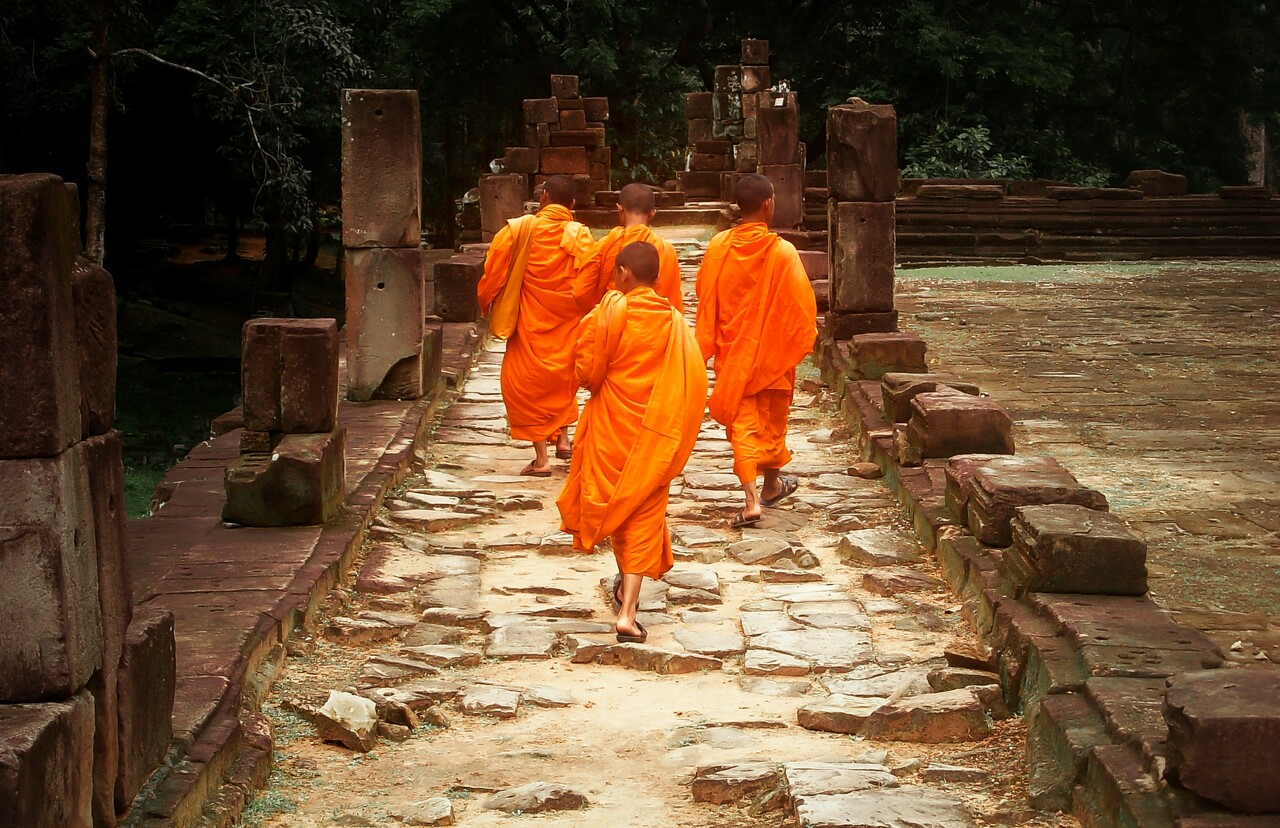What is the middle way?

Four Buddhist monks walk down a path inside Baphuon temple, Siem Reap, Cambodia | Source: Unsplash.
The Buddha began his first teaching by telling his listeners to take the middle way, the middle path between extreme asceticism on one hand and sensual indulgence on the other. This exhortation to moderation underlies much of Buddhist thought through the centuries and across traditions.
The Buddha’s time was a period of great religious upheaval and experimentation. Wandering renunciates from various sects, seeking spiritual fulfillment and freedom from the suffering of life, became a common sight on the Gangetic Plain. Before he was known as the Buddha, or Awakened One, he was Siddhartha Gautama, a wealthy nobleman living in luxury. But later he left his home, renounced that lifestyle, and embraced the other extreme as an ascetic practicing mortifying austerities. Statues depicting this period of the Buddha’s life show an emaciated figure with all of his ribs visible as he sits meditating. It is said he survived on just a few grains of rice a day.
Ultimately, the Buddha realized that both indulgence and deprivation were equally useless, even detrimental to his goal of achieving awakening. Legend says that this moment of awareness occurred the day before his enlightenment. Close to death, the Buddha abandoned his austere practices and the ascetics he had been practicing with, and shortly after that he encountered a young woman named Sujata, who offered him a meal of rice and milk, restoring his energy. Having found fault with both extremes, the Buddha embraced the middle path in between. In his first sermon, he expounded this middle way along with the eightfold path and its prescriptions for right behavior.
The middle path informs much of Buddhist thought, even its more abstract concepts. For example, once when the Buddha was asked whether or not the self exists, he remained silent. He told a student afterward that if he had answered yes, he would have been promoting the concept of eternalism; if he had answered no, he would have been promoting annihilationism or nihilism. In between, in his silence, lay the middle path.
As Buddhist thought and practice developed, the concept was applied to any dualism, or diametrically opposed pair (subject/object, samsara/nirvana, part/whole). The Madhyamaka school, founded several hundred years after the historical Buddha’s lifetime, takes its name from the Sanskrit term for middle path, madhyama-pratipad. The school’s exemplar, the philosopher-monk Nagarjuna (c. 2nd-3rd centuries CE), applied the middle path to existence and nonexistence: In between any two opposites lies emptiness, or sunyata, which is not nothingness but a vast creative potential, he argued. The middle way is similarly fluid and full of possibilities, for Buddhist thought and for our lives.

Tricycle is more than a magazine
Gain access to the best in sprititual film, our growing collection of e-books, and monthly talks, plus our 25-year archive
Subscribe now